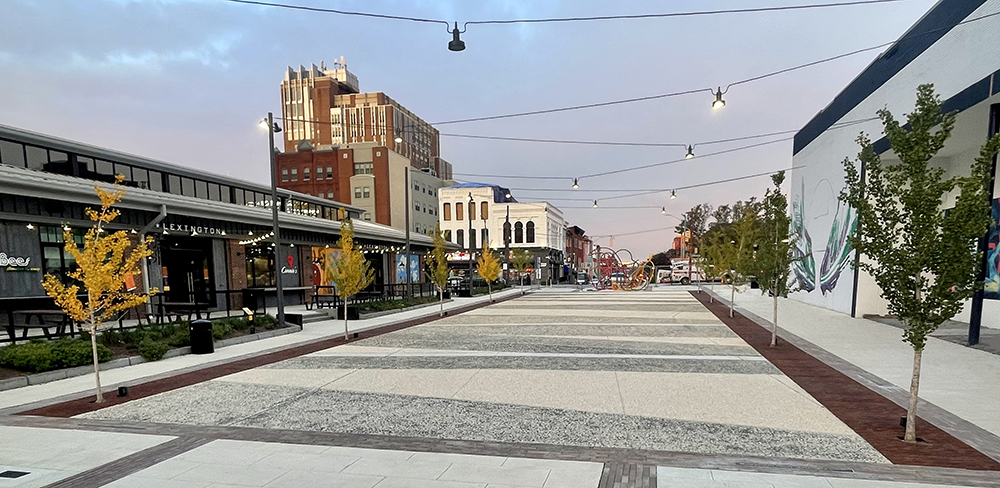8 Benefits of Large Tree Grate Arrays
We love working with landscape architects to create beautiful streetscapes and plazas where people and nature can thrive together.
In this article, we will go over eight key reasons why these spaces increasingly feature one or more large tree grate arrays, a trend that has emerged in response to several urban design, environmental, and functional considerations.
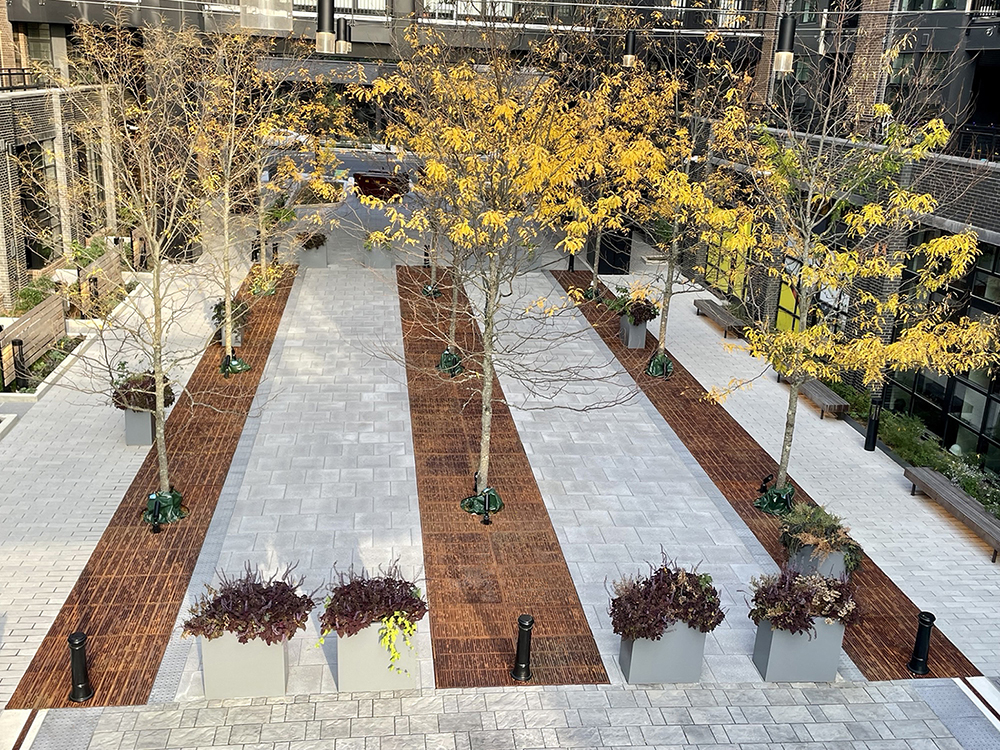
Rain 4′ x 4′ heel-proof tree grates and 24″ x 48″ extension panels combined to create three large arrays – the left and right arrays are 5′ x 79′-7″, and the middle array is 7′ x 79′-7″. Raw cast iron. DESIGN: Floura Teeter. PROJECT: Rye Street. LOCATION: Baltimore, MD.
1. Accommodating Tree Growth
- Support for Larger Trees: As cities increasingly prioritize urban greening initiatives, they are planting bigger trees to maximize environmental benefits. Larger tree grates provide the necessary space to accommodate these trees’ root systems as they mature, ensuring they can grow without constraint.
- Future-Proofing: By installing larger grates, urban planners are anticipating the long-term needs of trees, allowing roots to spread over time without needing to replace the grates.
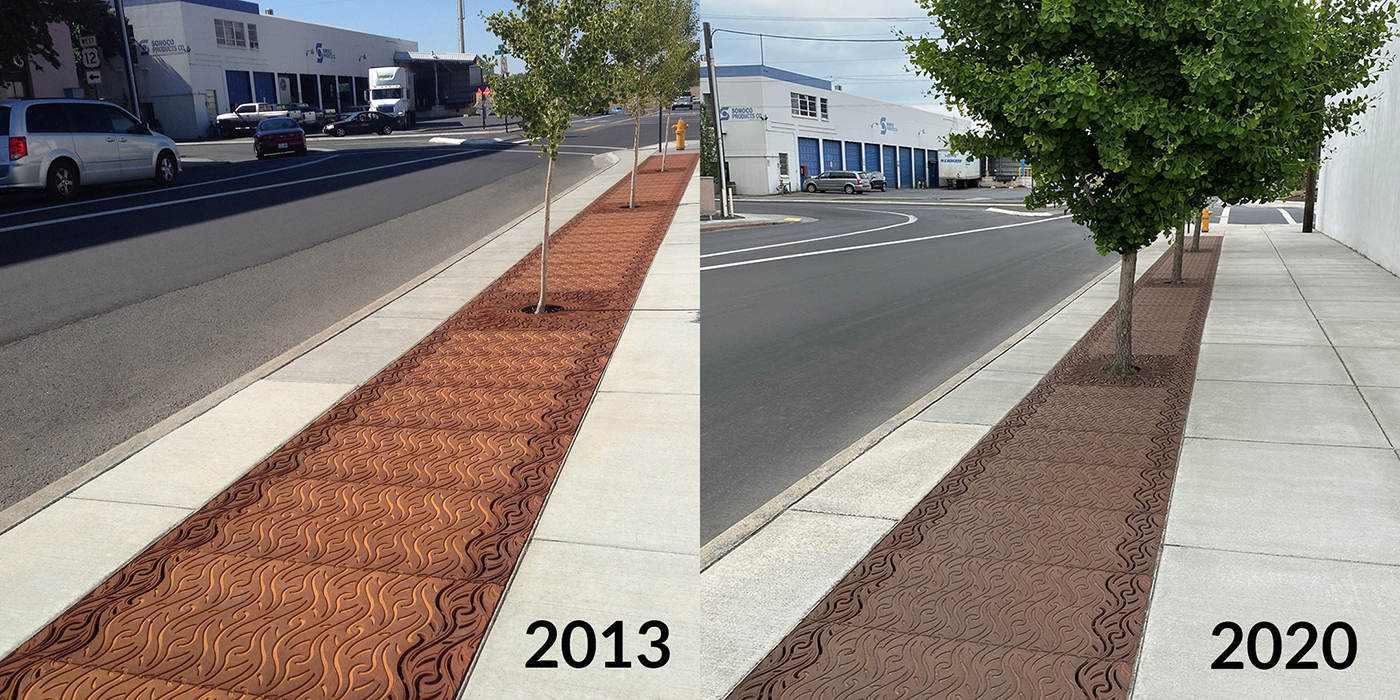
Minnione 4′ x 4′ tree grates arrayed with 2′ x 4′ extension panels. Raw cast iron. LOCATION: Lewiston, ID.
2. Sustainability and Environmental Goals
- Water Management: Larger grates allow more water to penetrate the soil around the tree, reducing runoff and promoting groundwater recharge. This is especially important in cities aiming to adopt sustainable water management practices.
- Urban Cooling and Shade: Large trees help mitigate the urban heat island effect by providing more shade and cooling. Larger grates support the planting of bigger trees, which have a greater capacity for shading streets and sidewalks, thereby lowering temperatures in surrounding areas.
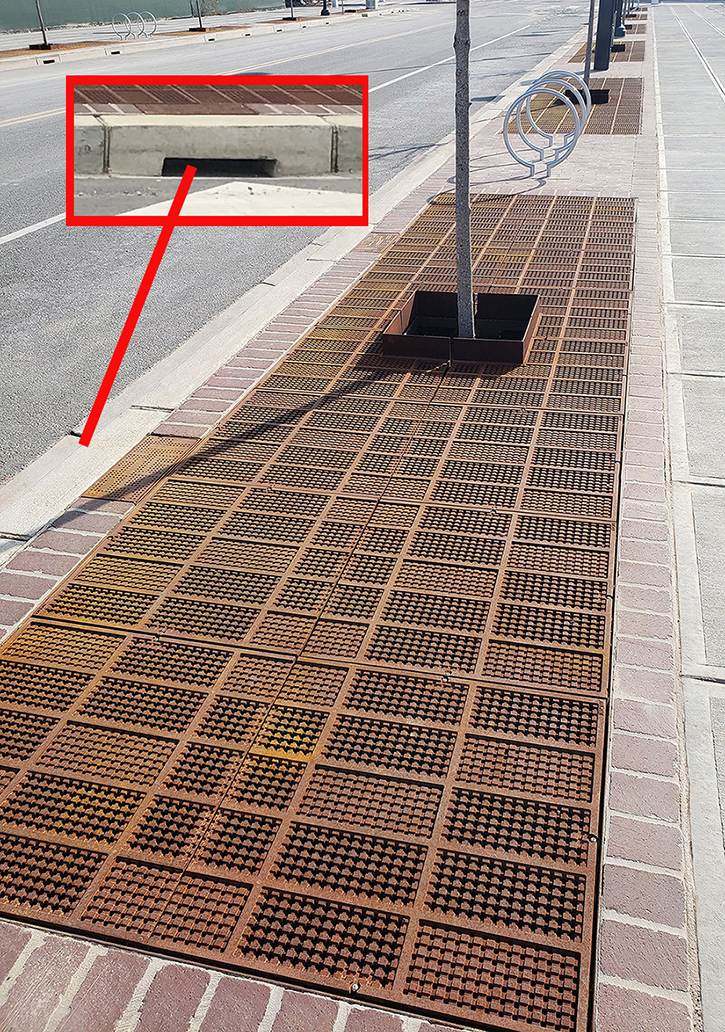
Explora 5′ x 5′ tree grates and 30″ x 30″ extension panels create a series of 5′ x 20′ arrays, each with two curb inlet openings for stormwater management. Raw cast iron. DESIGN/ENGINEERING: AECOM. PROJECT: DC United Soccer Stadium. LOCATION: Washington, DC.
3. Adapting to Climate Change
- Resilience Planning: As cities prepare for climate change, they are focusing on planting resilient, drought-tolerant trees that require more root space for optimal water absorption and nutrient intake. Larger grates help accommodate these needs, supporting the health and growth of climate-adapted tree species.
- Stormwater Management: In some cities, large tree grates are part of green infrastructure systems designed to capture and filter stormwater runoff. They can be connected to other surface drainage structures like trench grates and building downspouts to further capture excess water beyond the grate array’s immediate surrounding environment.
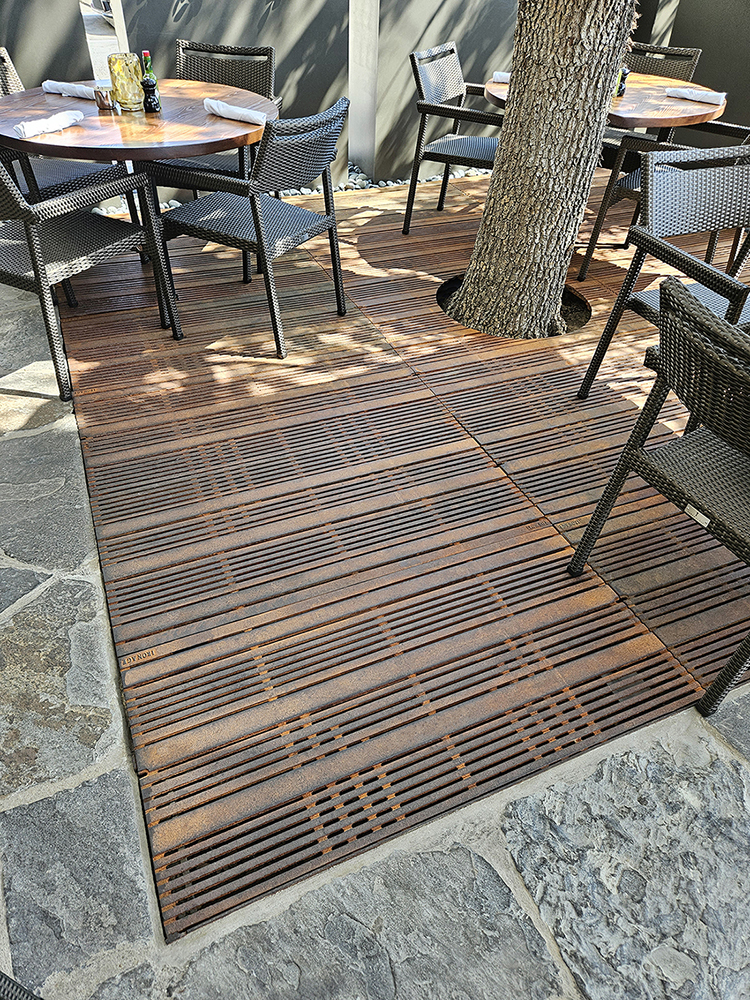
12′ sq. tree grate array created from Madras 24″ x 48″ extension panels. Raw cast ductile iron. DESIGN: Michael Hsu Office of Architecture. PROJECT: Bobbie’s Airway Grill. LOCATION: Dallas, TX
4. Improved Tree Health
- Better Root Expansion: Larger tree grates provide more room for roots to spread out without getting compacted under hard surfaces like concrete or pavement. This promotes better root aeration, improved water absorption, and overall healthier trees.
- Enhanced Soil Quality: A larger surface area of exposed soil underneath the grate allows for better nutrient exchange and soil enrichment, improving tree health and longevity.
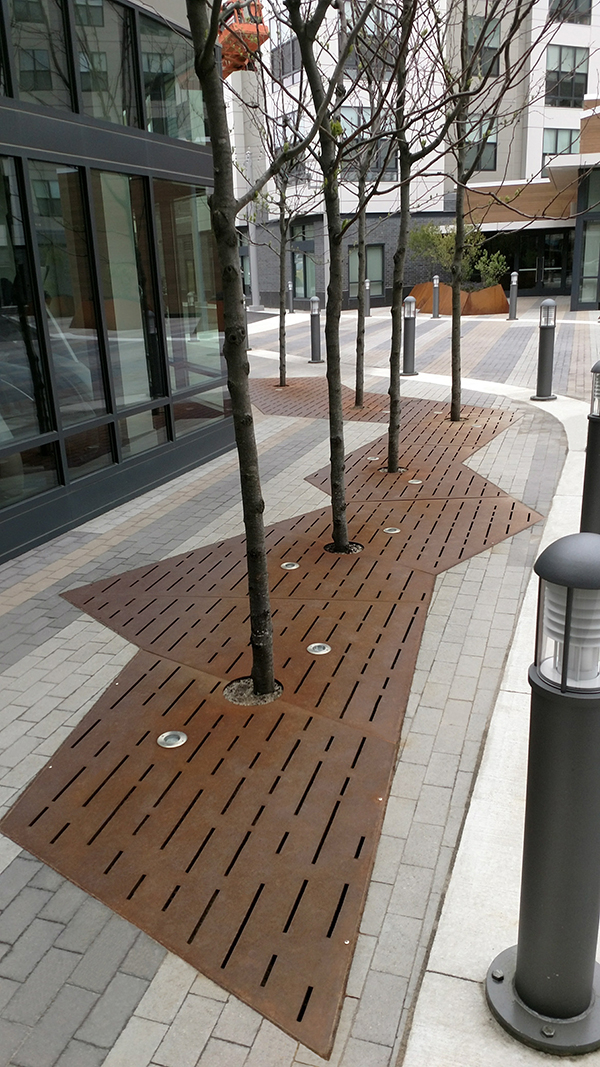
Custom “Rain” laser cut corten steel tree grate. DESIGN: Landworks Studio, Inc. Project: West of Chestnut. LOCATION: Quincy, MA.
5. Urban Design and Placemaking
- Aesthetic and Functional Design: Larger grates allow designers to integrate greenery more harmoniously into public spaces, without compromising on aesthetics. They can be used as part of wider landscaping designs, creating greener, more inviting streetscapes and plazas.
- Public Gathering Spaces: In modern urban design, larger tree grates create a more seamless integration of green spaces with pedestrian areas. These larger spaces around trees can be used creatively as part of seating, gathering spaces, or art installations.
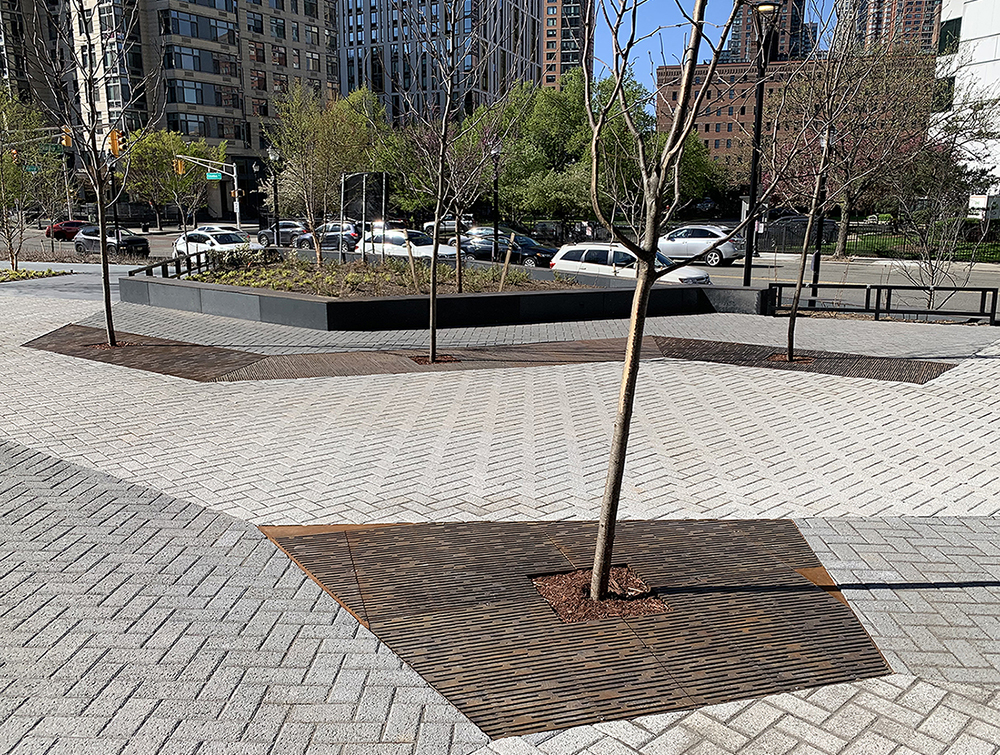
Rain 4′ x 4′ and 6′ x 6′ heel proof tree grates, combined with 24″ x 48″ extension panels to create laser cut angled arrays. Cast iron with baked-on-oil-finish. DESIGN: Melillo • Bauer • Carman Landscape Architecture. PROJECT: Haus25. LOCATION: Jersey City, NJ
6. Pedestrian and Accessibility Considerations
- Wider Walking Areas: A larger tree grate provides more flexibility for pedestrians, ensuring that the tree can be a part of the urban space without obstructing foot traffic. In areas with heavy pedestrian use, larger grates can make the streets more accessible and reduce crowding.
- Reducing Trip Hazards: The wider surface area can reduce tripping hazards by creating a smoother transition between paved walkways and tree surroundings. This is especially important for areas with high foot traffic or those prioritizing accessibility.
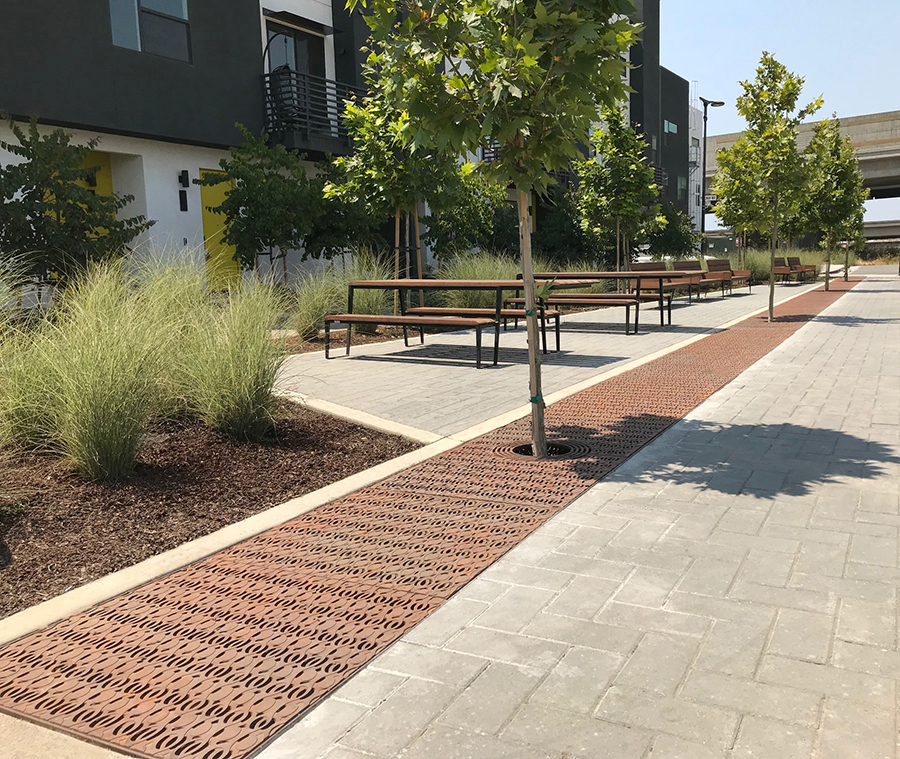
Janis 3′ x 6′ tree grate arrayed with 3′ x 3′ extension panels. Cast iron with baked-on-oil finish. PROJECT: 1401 Wood Street. LOCATION: Oakland, CA.
7. Responding to Public Demand for Green Spaces
- Greener, Healthier Cities: As more urban residents demand access to green spaces and environmental sustainability becomes a public priority, larger tree grates allow cities to plant and maintain larger trees that contribute to cleaner air, increased biodiversity, and improved quality of life for residents.
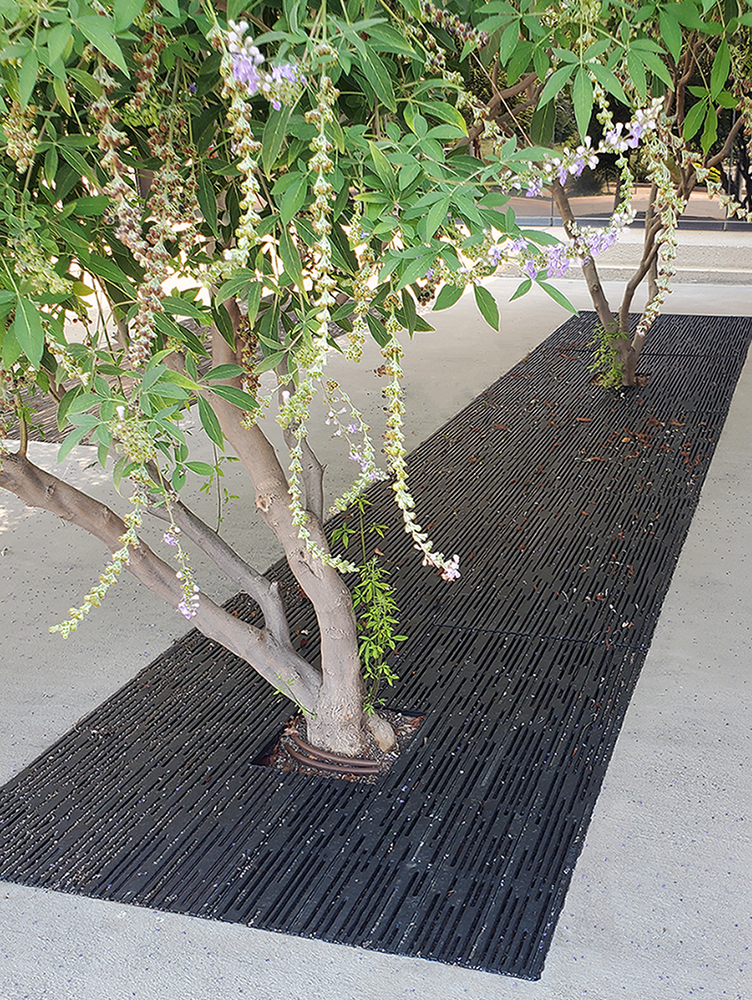
4′ x 14′ array comprised of Rain 4′ x 4′ heel proof tree grates and 24″ x 48″ extension panels. Cast iron with black powder coat finish. DESIGN: Pacheco Koch. PROJECT: Entry Plaza at 1925 W. John Carpenter Fwy. LOCATION: Irving, TX.
8. Concealment and Access of Underground Utilities
- Hiding Utilities: Large tree grates can cover electrical wiring, water mains, stormwater drainage, and other infrastructure, making the space look cleaner and more aesthetically pleasing.
- Access Panels: Tree grates designed with removable sections ensure utility workers can access necessary infrastructure without disturbing the tree’s root system or pedestrian flow.
We are encouraged by this trend toward larger tree grates. They are a forward-thinking solution to improve tree health, enhance urban design, and meet sustainability and climate resilience goals, all while making cities more livable and beautiful.

